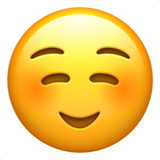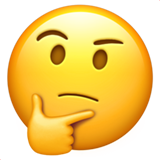Protein Modeling C
- EastStroudsburg13
- Admin Emeritus

- Posts: 3201
- Joined: January 17th, 2009, 7:32 am
- Division: Grad
- State: MD
- Pronouns: He/Him/His
- Has thanked: 47 times
- Been thanked: 204 times
- Contact:
Re: Protein Modeling C
Well, my Toober is a dark pink/magenta color, so if I tried doing red for helices and yellow for sheets it wouldn't work very well. I guess I could do other colors like blue and green, but those in my mind don't fit well. I also need more room on my index card, since i have barely enough room for the basic information using both sides of the card, so taking out the secondary structures from that would be helpful.
East Stroudsburg South Class of 2012, Alumnus of JT Lambert, Drexel University Class of 2017
Helpful Links
Wiki
Wiki Pages that Need Work
FAQ and SciOly FAQ Wiki
Chat (See IRC Wiki for more info)
BBCode Wiki
So long, and thanks for all the Future Dictator titles!
Helpful Links
Wiki
Wiki Pages that Need Work
FAQ and SciOly FAQ Wiki
Chat (See IRC Wiki for more info)
BBCode Wiki
So long, and thanks for all the Future Dictator titles!
-
Megan95
- Member

- Posts: 5
- Joined: February 22nd, 2011, 8:21 am
- Division: C
- State: PA
- Has thanked: 0
- Been thanked: 0
Re: Protein Modeling C
I'm kind of new to science o in general (last year was my first year), but this event is killing me. I only found out I was doing it last week, and none of the teachers even know how to begin this. Our regionals are in about 6 weeks, so I'm a little pressed for time. Can anyone tell me how to figure out the structure of klf4 to use in jmol? I've looked everywhere for the structure and "additions", and maybe it's really obvious and I'm just not understanding this, but I cannot figure out how to find the structure to even begin jmol, let alone modeling. Any kind of help I could get is awesome, my partner is MIA and I don't think he knows how to do this either. (Sorry about the freak out)
- EastStroudsburg13
- Admin Emeritus

- Posts: 3201
- Joined: January 17th, 2009, 7:32 am
- Division: Grad
- State: MD
- Pronouns: He/Him/His
- Has thanked: 47 times
- Been thanked: 204 times
- Contact:
Re: Protein Modeling C
Well, the basis of it is just modeling the backbone using a Toober or something similar. If you need to get one still it's at this link. Then you manipulate the jmol program to model the protein. This tutorial is very helpful in figuring out how to go about the pre-build model.
Once you have the backbone modeled and you're curious about the additions, you can research the protein. Most of the additions would have to do with the presence of zinc fingers in the protein as well as DNA.
If you have any more questions on specific stuff, you can ask. I'm still relatively new to this event, so other people might have other stuff to add. Good luck.
Once you have the backbone modeled and you're curious about the additions, you can research the protein. Most of the additions would have to do with the presence of zinc fingers in the protein as well as DNA.
If you have any more questions on specific stuff, you can ask. I'm still relatively new to this event, so other people might have other stuff to add. Good luck.
East Stroudsburg South Class of 2012, Alumnus of JT Lambert, Drexel University Class of 2017
Helpful Links
Wiki
Wiki Pages that Need Work
FAQ and SciOly FAQ Wiki
Chat (See IRC Wiki for more info)
BBCode Wiki
So long, and thanks for all the Future Dictator titles!
Helpful Links
Wiki
Wiki Pages that Need Work
FAQ and SciOly FAQ Wiki
Chat (See IRC Wiki for more info)
BBCode Wiki
So long, and thanks for all the Future Dictator titles!
-
Megan95
- Member

- Posts: 5
- Joined: February 22nd, 2011, 8:21 am
- Division: C
- State: PA
- Has thanked: 0
- Been thanked: 0
Re: Protein Modeling C
Thanks!!!!EASTstroudsburg13 wrote:Well, the basis of it is just modeling the backbone using a Toober or something similar. If you need to get one still it's at this link. Then you manipulate the jmol program to model the protein. This tutorial is very helpful in figuring out how to go about the pre-build model.
Once you have the backbone modeled and you're curious about the additions, you can research the protein. Most of the additions would have to do with the presence of zinc fingers in the protein as well as DNA.
If you have any more questions on specific stuff, you can ask. I'm still relatively new to this event, so other people might have other stuff to add. Good luck.
-
Megan95
- Member

- Posts: 5
- Joined: February 22nd, 2011, 8:21 am
- Division: C
- State: PA
- Has thanked: 0
- Been thanked: 0
Re: Protein Modeling C
I was wondering... on the Jmol of 2wbu, what are the red sphere things? Are they hydrogen molecules or something? I looked up the structure and found the alpha helixes and sidechains, but I just can't figure out what the little spheres are. 
- Kokonilly
- Exalted Member

- Posts: 631
- Joined: January 11th, 2009, 7:59 am
- Division: Grad
- State: CA
- Has thanked: 0
- Been thanked: 0
Re: Protein Modeling C
Cool, thanks!Phenylethylamine wrote:I'm sure Wikipedia has that information, but I also sincerely doubt any judge will measure your DNA that carefully- not to mention that the DNA isn't directly part of the protein you're modeling, so it's a creative addition; you can make it schematic if you want. It doesn't even have to be super-accurate, as long as it's recognizable and accurate enough to illustrate whatever point you're making by including it.
- Phenylethylamine
- Exalted Member

- Posts: 1075
- Joined: January 8th, 2009, 4:47 pm
- Division: Grad
- State: MA
- Has thanked: 0
- Been thanked: 0
Re: Protein Modeling C
When you first open a file in Jmol, it shows you all the atoms of the protein in "ball-and-stick" format. The spheres are individual atoms; red ones are oxygen in the default color scheme.Megan95 wrote:I was wondering... on the Jmol of 2wbu, what are the red sphere things? Are they hydrogen molecules or something? I looked up the structure and found the alpha helixes and sidechains, but I just can't figure out what the little spheres are.
Have you been using the menus in Jmol or the command prompt? (That is, have you been changing the way you view the molecule at all, and if so, how?)
For anyone new to the event, I recommend reading the Protein Modeling Wiki; if you have more questions after reading that (which you most probably will), come back and ask (this also helps us keep updating the wiki to make it as helpful as possible).
No problem.Kokonilly wrote:Cool, thanks!Phenylethylamine wrote:I'm sure Wikipedia has that information, but I also sincerely doubt any judge will measure your DNA that carefully- not to mention that the DNA isn't directly part of the protein you're modeling, so it's a creative addition; you can make it schematic if you want. It doesn't even have to be super-accurate, as long as it's recognizable and accurate enough to illustrate whatever point you're making by including it.
Protein Modeling Event Supervisor 2015
MA State Science Olympiad Tournament
MIT Invitational Tournament
--
Ward Melville High School Science Olympiad 2010-2012
Paul J Gelinas JHS Science Olympiad 2007-2009
MA State Science Olympiad Tournament
MIT Invitational Tournament
--
Ward Melville High School Science Olympiad 2010-2012
Paul J Gelinas JHS Science Olympiad 2007-2009
-
Mithrandir
- Member

- Posts: 14
- Joined: February 16th, 2011, 5:22 pm
- Division: C
- State: NY
- Has thanked: 0
- Been thanked: 0
Re: Protein Modeling C
Yeah usually the floating balls represent certain molecules. In the 2wbu I think it represents water molecules. The red ones are red as Phenylethylamine said, but there are probably also two small hydrogen atoms. It just shows that the protein is in water, which makes sense because most things are immersed in water in a cell. The gray spheres represent the Zinc Ion part of the Zinc Finger.Megan95 wrote:I was wondering... on the Jmol of 2wbu, what are the red sphere things? Are they hydrogen molecules or something? I looked up the structure and found the alpha helixes and sidechains, but I just can't figure out what the little spheres are.
Protein Modeling 2nd regionals, 4th states
Optics 1st regionals, 2nd states
Thermo 1th regionals, 19th states
Bottle Rockets 1st states (last year)
Optics 1st regionals, 2nd states
Thermo 1th regionals, 19th states
Bottle Rockets 1st states (last year)
-
Mithrandir
- Member

- Posts: 14
- Joined: February 16th, 2011, 5:22 pm
- Division: C
- State: NY
- Has thanked: 0
- Been thanked: 0
Re: Protein Modeling C
Yes the commands done in the console worked very nice thx! Unfortunately it looks like almost all the side chains are polar. And when you try to select the ones that are nonpolar you get 0, so I don't think it would be a very good creative addition. Any Thoughts?Phenylethylamine wrote:These all work, but they cause everything else to disappear. If you want to display polar/nonpolar sidechains without affecting the rest of your model, try:TheGenius wrote:Display polarMithrandir wrote:Does anybody know how to view regions of polar and nonpolar on the protein? I couldn't figure out how to do this in Jmol and I think it would be a good creative addition.
Display not polar
Or
Hide not polar
Hide polar
Or
Restrict polar
Restrict not polar
The first two sets are functionally identical and can be reversed using display all or undo. The last set can only be reversed using undo.
select polar and sidechain
wireframe [number]
The number is the radius of the wireframe; I usually use 200. If you don't put in a number, the sidechains will show up as thin lines.
Protein Modeling 2nd regionals, 4th states
Optics 1st regionals, 2nd states
Thermo 1th regionals, 19th states
Bottle Rockets 1st states (last year)
Optics 1st regionals, 2nd states
Thermo 1th regionals, 19th states
Bottle Rockets 1st states (last year)
-
Mithrandir
- Member

- Posts: 14
- Joined: February 16th, 2011, 5:22 pm
- Division: C
- State: NY
- Has thanked: 0
- Been thanked: 0
Re: Protein Modeling C
If you look at the scoring guide last year you get points for representing which parts are beta pleated sheets and alpha helixes. You get no additional points for color coding them if you already have them folded in the correct way. The only advantage is that if you color code them then you don't have to worry about you secondary structures being shaped correctly.EASTstroudsburg13 wrote:Well, my Toober is a dark pink/magenta color, so if I tried doing red for helices and yellow for sheets it wouldn't work very well. I guess I could do other colors like blue and green, but those in my mind don't fit well. I also need more room on my index card, since i have barely enough room for the basic information using both sides of the card, so taking out the secondary structures from that would be helpful.
Protein Modeling 2nd regionals, 4th states
Optics 1st regionals, 2nd states
Thermo 1th regionals, 19th states
Bottle Rockets 1st states (last year)
Optics 1st regionals, 2nd states
Thermo 1th regionals, 19th states
Bottle Rockets 1st states (last year)
Who is online
Users browsing this forum: No registered users and 2 guests

